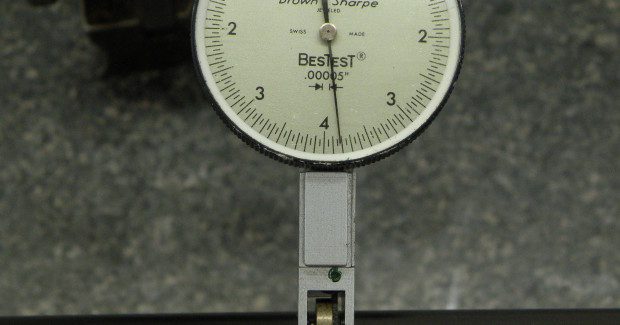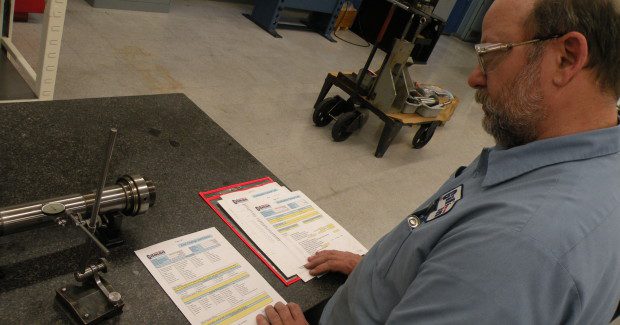Spindle Repair: The New Way to Save Money
If a spindle on one of your machines fails tomorrow, what’s your backup plan? Can you afford to wait several weeks to receive a new spindle? Spindle repair is another option that many companies are now considering.
Posted: October 20, 2012
If a spindle on one of your machines fails tomorrow, what’s your backup plan? Do you have the time, equipment and expertise required to rebuild the spindle yourself? You could purchase a new spindle, but often that can take several weeks to a few months to receive. Can you afford to have your machine out of service for that long of time?
There is another option that many companies are now considering: spindle repair. Refurbishing spindles costs about 40 percent less than purchasing new, and typically they can be back in service in less than a week. However, not all spindle repair services are the same. While some providers offer spindle service, many don’t take the time to fully troubleshoot the entire system to identify the root of the problem that caused the spindle to fail in the first place. Receiving a comprehensive review of your system is a critical step in not only making the correct spindle repairs, but ensuring those repairs provide optimal performance.
WHAT IS SPINDLE SERVICE?
The goal of spindle service is to keep companies operating at peak capacity by minimizing any disruption to productivity. Spindles truly are the heart of any machine; when a spindle fails, the machine stops, and when it stops, it’s not producing . . . and that’s lost revenue. When time is of the essence, spindle service can quickly repair the spindle, as well as evaluate the entire spindle system, and get your machine operating again.
CAUSES OF SPINDLE FAILURE
Many factors can contribute to a spindle failing, but the leading cause is from contamination, such as chips or condensation that have found their way into the spindle. Most coolants are water-based, which can lead to rust forming inside the spindle. Additionally, a spindle seal can fail over time, leaving an opening for other contaminates to enter.
The humid atmosphere created in many machines, especially closed-type ones, further contributes to contamination. When the spindle is operating, its temperature is hot, and when the spindle is stopped it begins to cool, causing a “chimney effect” to occur that wants to suck in all the warm humid air into the spindle and bearings.
It’s difficult to predict if or when a spindle is going to fail. Certainly the frequency of the machine’s operation, as well as the overall application can play a role in the life of a spindle. If a machine is operating 24/7 in a vigorous environment, more stress is being applied to the spindle system as opposed to a machine that’s only occasionally running. Bearings have a service life in which they are rated to run for a set amount of time, but the useful life of a bearing varies widely. However, there are some things that you can do to extend the life of the spindle system, while identifying a potential trouble before it becomes a full-blown failure.
A NEW WAY OF VIEWING SPINDLES
Unfortunately a lot of companies don’t look at the spindle system as a routine maintenance item. Rather, they just run the machines until something happens, and then the spindle becomes top of mind. The first thing you should do is establish a routine maintenance program for your spindle system. When possible, begin to schedule downtime to inspect, clean and lubricate the system.
You should also conduct a vibration analysis on the spindle system and establish a baseline for performance, and test the system at periodic intervals. Vibration can be a telltale sign of trouble in the spindle, so the more often you can perform vibration analysis on the spindle system to catch a problem in the initial stages the better.
Another aspect of routine maintenance is training employees who are working on the machines to listen for any changes in sound. A spindle system in trouble generally gives off warnings, and those are noted by unusual noises, rattling or grinding sounds. If something just doesn’t sound right, it probably isn’t, and frontline employees are the first ones who can detect a sign of trouble.
You can also look at the output of parts the machine is producing; if the tolerances are off and not up to specification, the spindle system could be in trouble. Being able to detect a problem in its early stages will prove to be less expensive and minimize your machine’s downtime.
BEST OPTION: SPINDLE SERVICE
If your spindle system does fail, you have three options: repair it yourself, purchase new or have it serviced. In most cases, the latter is the best option for a number of reasons. Having a reputable spindle repair provider will not only repair the spindle, but also has the expertise, equipment and facilities to perform a comprehensive review of the entire system and make the necessary fixes to ensure optimal performance when its back operating in your plant.
Depending on the type of spindle, service can be performed in just a matter of days. A belt-driven spindle that involves replacing seals and bearings can be serviced and back in operation in a few days, whereas servicing a motorized spindle, which involves an analysis of the motor, removing moisture, replacing the stator and windings etc., is more intensive and can take longer. Here’s how the process works:




















